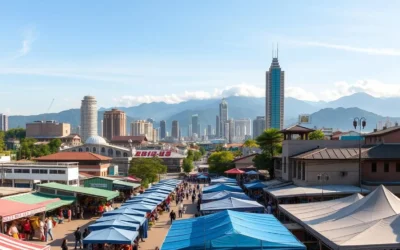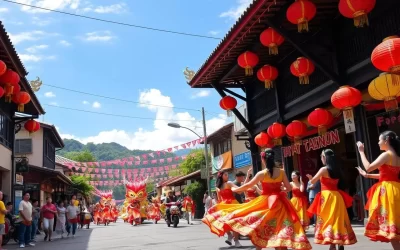✓ Accommodations ✓ Flights ✓ Rental Cars
You might be surprised to learn about the rich linguistic diversity of Taitung County, located on the eastern coast of Taiwan. As one of the island’s most culturally diverse regions, this area is home to multiple ethnic groups, each contributing to its unique language environment.
The linguistic landscape of Taitung County reflects the complex cultural history and diverse population of the region. With seven of Taiwan’s officially recognized indigenous tribes residing in the area, the county plays a crucial role in indigenous language preservation.
As you explore the language situation in Taitung County, you’ll gain valuable insights into Taiwan’s broader cultural identity and the historical forces that have shaped the island nation.
The Linguistic Landscape of Taitung County
Taitung County’s language profile is a rich tapestry woven from threads of migration, colonization, and indigenous cultures. As you explore the linguistic landscape, you will discover the significant role that geography and demographics have played in shaping the county’s language development.
Geographic and Demographic Context
Taitung County, located on the southeastern coast of Taiwan, has a unique geographic setting that has influenced its linguistic diversity. The county’s terrain, with its rugged mountains and isolated valleys, has contributed to the preservation of various dialects and languages. With a population that includes a significant proportion of indigenous peoples and migrants from other parts of Taiwan, Taitung County’s demographic makeup is equally diverse.

- The indigenous Austronesian peoples have maintained their languages despite centuries of external influences.
- Han Chinese migration, particularly during the 18th and 19th centuries, introduced Hokkien and Hakka languages to the region.
- The county’s linguistic landscape has been further shaped by periods of colonization, including the Dutch and Japanese eras.
Historical Influences on Language Development
The language development in Taitung County has been significantly influenced by its history. Over time, the county has experienced multiple waves of migration, starting with the settlement of indigenous peoples thousands of years ago. The Hokkien dialect, which diverged from Chinese as early as the Han Dynasty, has played a crucial role in the county’s linguistic identity. The arrival of the Japanese in the late 19th century and the subsequent Kuomintang government in 1945 brought about significant changes in language policies, affecting the linguistic landscape.
As a result, Taitung County’s linguistic heritage is a complex blend of its indigenous, Chinese, and Japanese influences, making language an integral part of its cultural identity, shaped by migration over the years.
Mandarin Chinese: The Official Language
As you explore Taitung County, you’ll find that Mandarin Chinese plays a significant role as the official language. It’s used in government services, education, media, and official communications, serving as a unifying factor across the county’s diverse linguistic landscape.
Status and Usage in Taitung County
Mandarin Chinese is widely used in Taitung County for official purposes, including government, education, and public services. You’re likely to encounter Mandarin in official documents, public announcements, and educational materials. The widespread use of Mandarin has facilitated communication among people from different linguistic backgrounds within the county.
The promotion of Mandarin Chinese has been a significant aspect of language policy in Taitung County, as in the rest of Taiwan. This has contributed to a high level of Mandarin proficiency among the population, particularly among younger Taiwanese people and those in the education system.
Taiwanese Mandarin Characteristics
Taiwanese Mandarin, as spoken in Taitung County, has distinctive features that differentiate it from Beijing Standard Mandarin. For instance, you might notice less emphasis on retroflex consonants in Taiwanese Mandarin. While the tonal system remains largely intact, there are subtle variations in how tones are applied by locals compared to mainland Mandarin speakers.
The vocabulary used in Taitung County’s Mandarin includes unique terms that reflect local culture, indigenous influences, and historical Japanese loanwords not commonly found in mainland Chinese Mandarin. You might also observe that sentence structures sometimes incorporate patterns from Taiwanese Hokkien, especially among speakers who regularly use both languages.
| Feature | Taiwanese Mandarin | Beijing Standard Mandarin |
|---|---|---|
| Pronunciation of Retroflex Consonants | Less emphasis | Strong emphasis |
| Tonal System | Subtle variations | Standard tones |
| Vocabulary | Includes local terms and loanwords | Standard mainland Chinese vocabulary |
| Sentence Structure | Influenced by Taiwanese Hokkien | Standard Chinese sentence structure |
Code-switching between Mandarin and other local languages is also common in casual conversations in Taitung County, reflecting the multilingual nature of many residents. This linguistic diversity enriches the cultural landscape of the county.
Taiwanese Hokkien in Taitung County
Taitung County is home to a unique variant of Taiwanese Hokkien, shaped by its history and geography. This dialect is an essential part of the county’s cultural identity, reflecting the influences of its immigrant ancestors and indigenous communities.
Historical Development and Current Usage
Taiwanese Hokkien has a rich history in Taitung County, dating back to the immigration waves from Fujian province. Over time, it has developed distinct characteristics that differentiate it from the Hokkien spoken in other parts of Taiwan. The dialect has been influenced by neighboring indigenous languages, particularly in terms of place names and cultural practices. Today, Taiwanese Hokkien remains widely spoken in Taitung County, playing a vital role in daily communication and community life.
The current usage of Taiwanese Hokkien in Taitung County is characterized by its widespread use in informal settings, such as family gatherings and local markets. However, the dialect faces challenges in terms of standardized writing systems, with speakers often using a combination of Chinese characters and romanization.
Unique Features of Taitung Hokkien
Taitung’s variant of Taiwanese Hokkien boasts several unique features. For instance, it has preserved some older linguistic elements that have been lost in other regions, making it valuable for understanding the historical development of the language. The tonal system and phonetic characteristics of Taitung Hokkien reflect its origins in Fujian province while incorporating local innovations.
Some of the distinctive features of Taitung Hokkien include its diverse set of finals, which include plosive and nasal finals, as well as nasalization of the coda and the glottal stop. The dialect’s tonal system is also intricate, featuring five tonal contours that surpass Mandarin in tonal diversity.
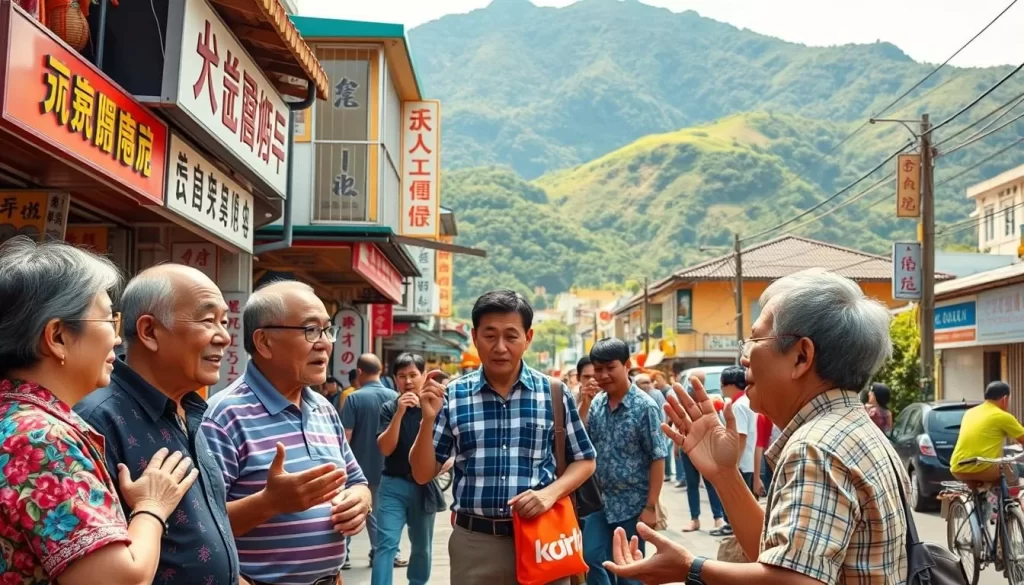
| Feature | Description | Significance |
|---|---|---|
| Tonal System | Five tonal contours | Surpasses Mandarin in tonal diversity |
| Phonetic Characteristics | Diverse set of finals | Gives the language a richer acoustic palette |
| Linguistic Influences | Influences from indigenous languages | Reflects the cultural diversity of Taitung County |
Indigenous Languages of Taitung County, Taiwan: Official and Widely Spoken
The cultural fabric of Taitung County is intricately woven with the threads of its indigenous languages. As you explore the linguistic landscape of this region, you will discover the rich diversity and cultural significance of these languages.
Formosan Language Families
Taitung County is home to several Formosan languages, which are part of the Austronesian language family. These languages are not only significant to the indigenous people but also hold great cultural and historical value. Formosan languages are diverse, with each language having its own distinct grammar, vocabulary, and pronunciation.
Some of the indigenous languages spoken in Taitung include the Amis, Paiwan, and Bunun languages. These languages are spoken by the respective indigenous communities and are an integral part of their identity.
| Language | Speakers | Region |
|---|---|---|
| Amis | Approximately 10,000 | Coastal areas |
| Paiwan | Around 8,000 | Mountainous regions |
| Bunun | About 5,000 | Mountainous regions |
Preservation Efforts and Current Status
Efforts to preserve the indigenous languages of Taitung County are underway, with various initiatives aimed at documenting, teaching, and revitalizing these languages. Since 2001, Taiwanese schools have incorporated the teaching of indigenous languages, recognizing their cultural importance in education.
Some of the initiatives include language classes in local schools, community-based language nests, and immersion programs. The National Taitung University also plays a crucial role in indigenous language preservation through its research centers and programs that train native speakers as language teachers.
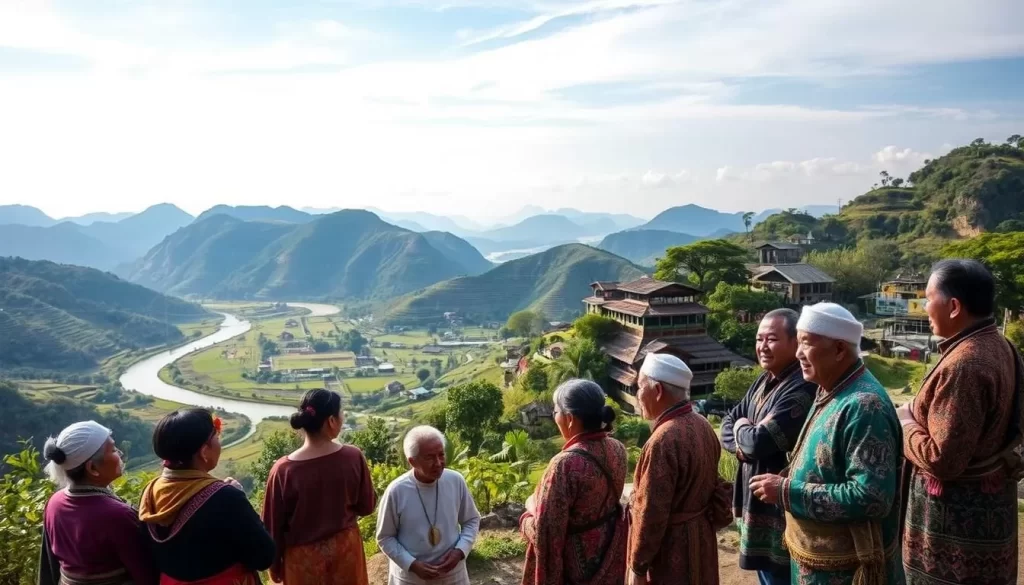
Despite these efforts, most indigenous languages in Taitung remain endangered, with fluent speakers primarily among the elderly population. You can contribute to the preservation of these languages by supporting local initiatives and learning about the cultural significance of these languages.
Hakka Language Communities
In Taitung County, the Hakka language is not just a means of communication but a symbol of community heritage. The Hakka people have a distinct cultural identity that is deeply rooted in their language and traditions.
Distribution in Taitung County
The Hakka language is spoken by a significant portion of the population in certain areas of Taitung County. Efforts to document and preserve the language have been underway, recognizing its importance in the community.
Here is a breakdown of the Hakka population distribution in Taitung County:
| District | Hakka Population | Percentage of Total Population |
|---|---|---|
| Taitung City | 15,000 | 20% |
| Beinan Township | 8,000 | 15% |
| Guanshan Township | 5,000 | 10% |
Cultural Significance and Preservation
The Hakka language plays a vital role in preserving cultural heritage, including traditions, folk songs, and culinary knowledge. Cultural festivals like the Hakka Tung Blossom Festival provide opportunities for language use and transmission to younger generations.
Some key preservation efforts include:
- Dedicated Hakka language classes in schools
- Community centers offering language courses
- Local media programming in Hakka
- Cultural centers established by the Hakka Affairs Council
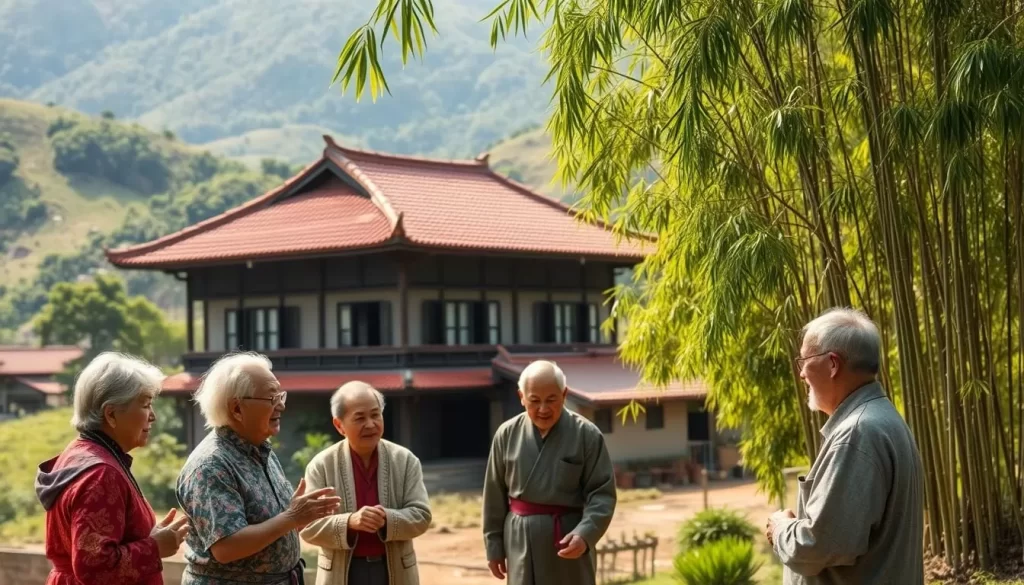
Today, the Hakka language remains an essential part of Taitung County’s linguistic diversity, and continued efforts are necessary to ensure its preservation for future generations.
English and Other Foreign Languages
As you explore Taitung County, Taiwan, you’ll discover a diverse linguistic landscape that includes English and other foreign languages. The presence of these languages is a testament to the county’s cultural openness and its engagement with the wider world.
English Education and Usage
English is taught in schools across Taitung County, reflecting its importance in global communication. Many young people in the county have a good command of English, which they use in various contexts, from education to tourism. As a result, visitors often find it relatively easy to navigate the county using English. The use of English is also encouraged through various language programs and cultural exchanges.
Tourism has played a significant role in promoting the use of English in Taitung County. With more visitors coming from English-speaking countries, there’s a growing need for locals to communicate effectively in English. This has led to an increase in English language courses and training programs tailored to the needs of the local population.
Japanese and Other Languages
The legacy of Japanese rule in Taiwan from 1895 to 1945 continues to influence the linguistic landscape of Taitung County. Many elderly residents still speak Japanese, and the language remains significant in certain contexts. Japanese loanwords are also common in local languages, particularly in terms related to technology, infrastructure, and cuisine.
Other foreign languages, such as Indonesian, Vietnamese, and Thai, are also present in Taitung County, primarily spoken by migrant workers and spouses who have settled in the area. This diversity enriches the cultural fabric of the county and reflects its openness to different cultures.
| Language | Speakers | Context |
|---|---|---|
| English | Young people, tourists | Education, tourism |
| Japanese | Elderly residents, business leaders | Legacy of Japanese rule, business |
| Southeast Asian languages | Migrant workers, spouses | Work, family |
Conclusion: The Future of Languages in Taitung County
Taitung County’s diverse linguistic tapestry is facing a pivotal moment, where the forces of globalization and local identity intersect. As the county moves forward, it must balance the need for modernization and global connectivity with the preservation of its rich linguistic diversity.
The government has taken significant steps by recognizing the importance of multilingualism, increasing funding for language education programs that support both indigenous languages and Taiwanese Hokkien alongside Mandarin. This shift acknowledges the value of linguistic diversity in enriching the cultural identity of Taitung County.
Digital technology is playing a crucial role in language preservation, with apps, online dictionaries, and social media helping younger generations access and learn traditional languages. However, challenges persist, particularly in standardizing writing systems for non-Mandarin languages. The use of Chinese characters for Taiwanese Hokkien and the romanization of indigenous languages are areas that require ongoing attention.
The development of tourism in Taitung County presents both opportunities and challenges. While it creates economic incentives for maintaining cultural distinctiveness, it also risks commercializing language and culture. Educational initiatives that emphasize the value of multilingualism are crucial, with schools incorporating local language instruction into their curricula.
The future linguistic landscape of Taitung will be shaped by the balance between practical considerations and cultural identity. Despite the challenges, Taitung County’s commitment to linguistic diversity makes it a model for language preservation efforts throughout Taiwan and potentially worldwide.
The above is subject to change.
Check back often to TRAVEL.COM for the latest travel tips and deals.




